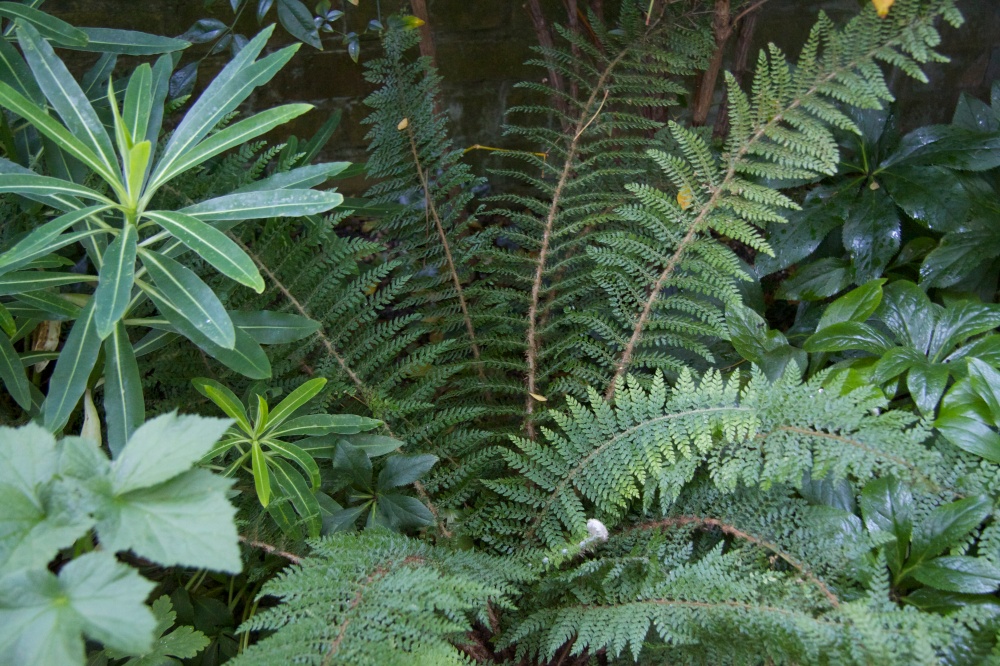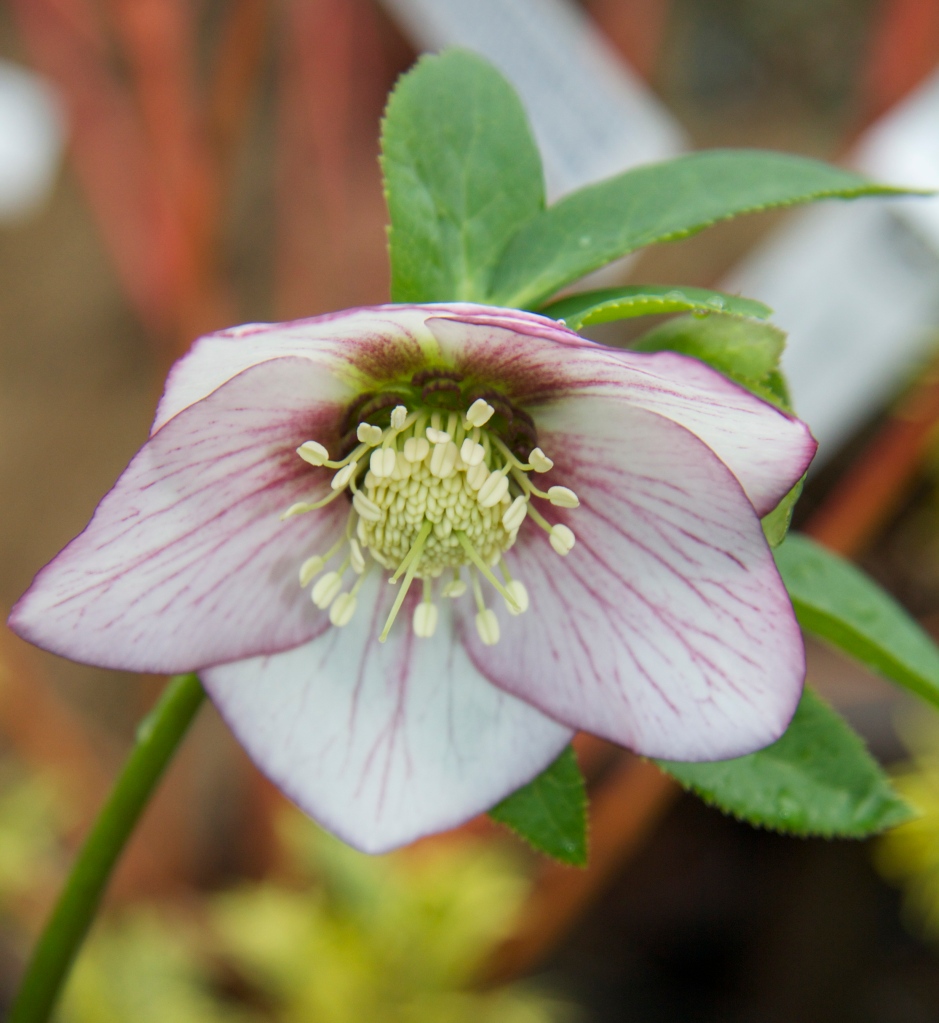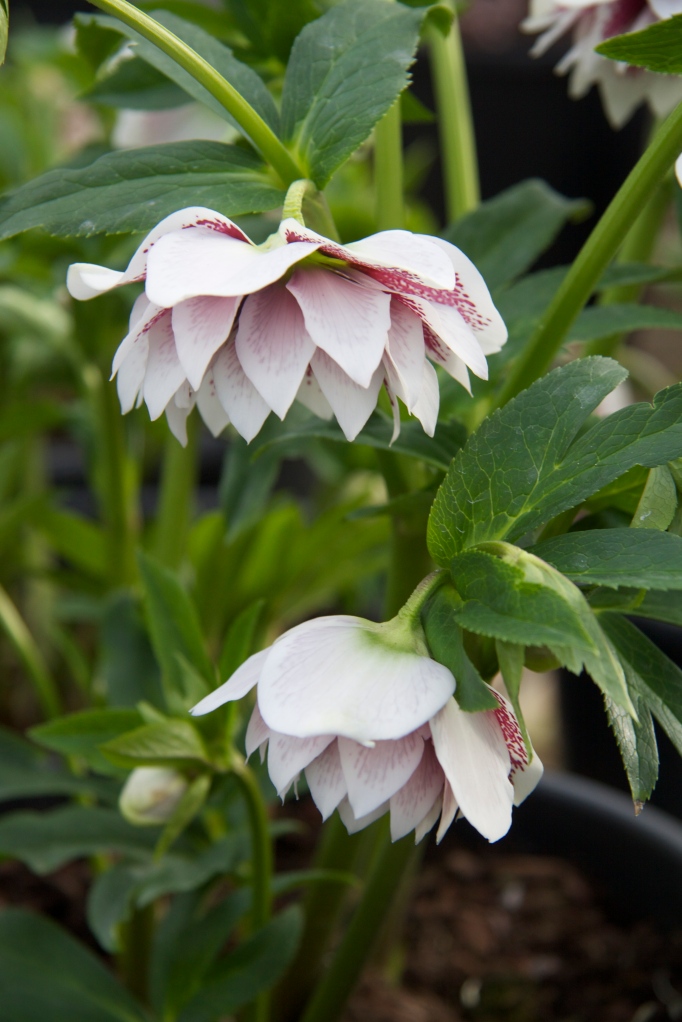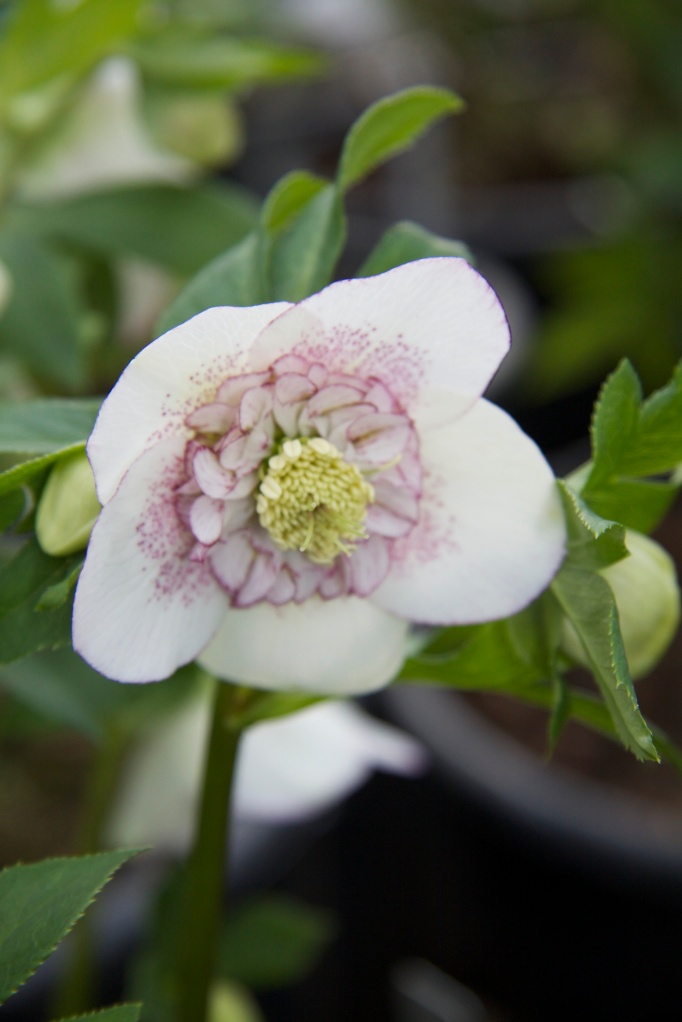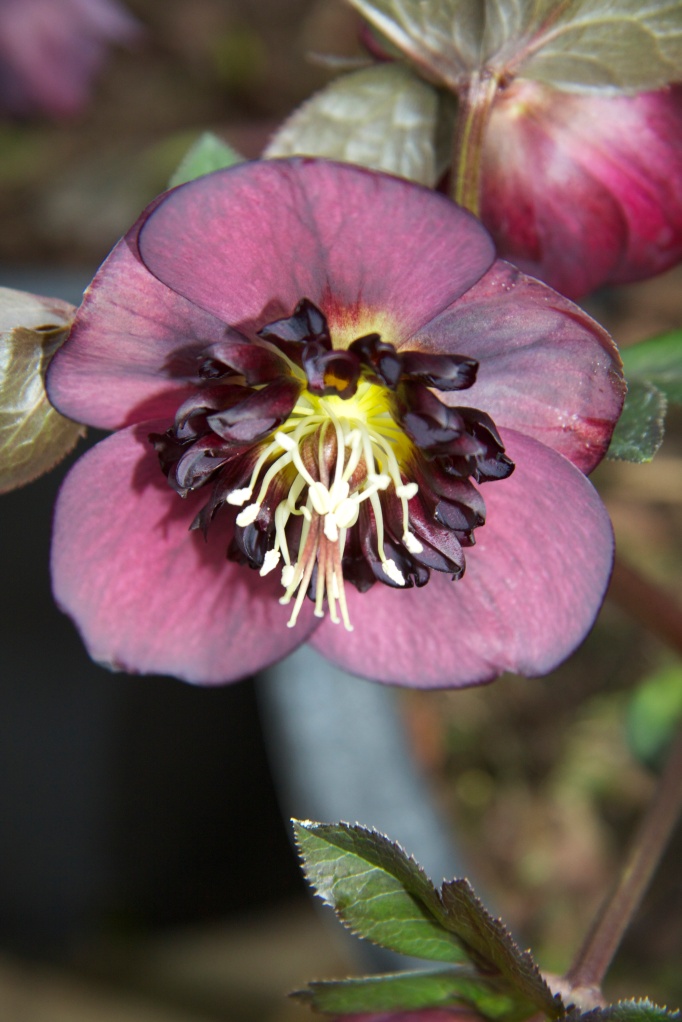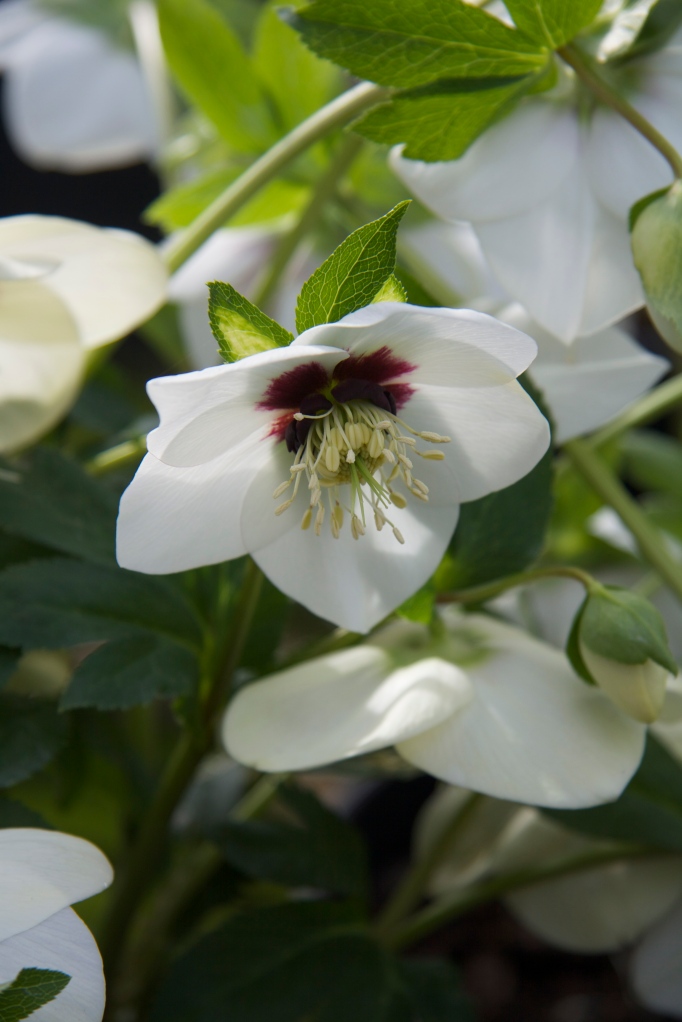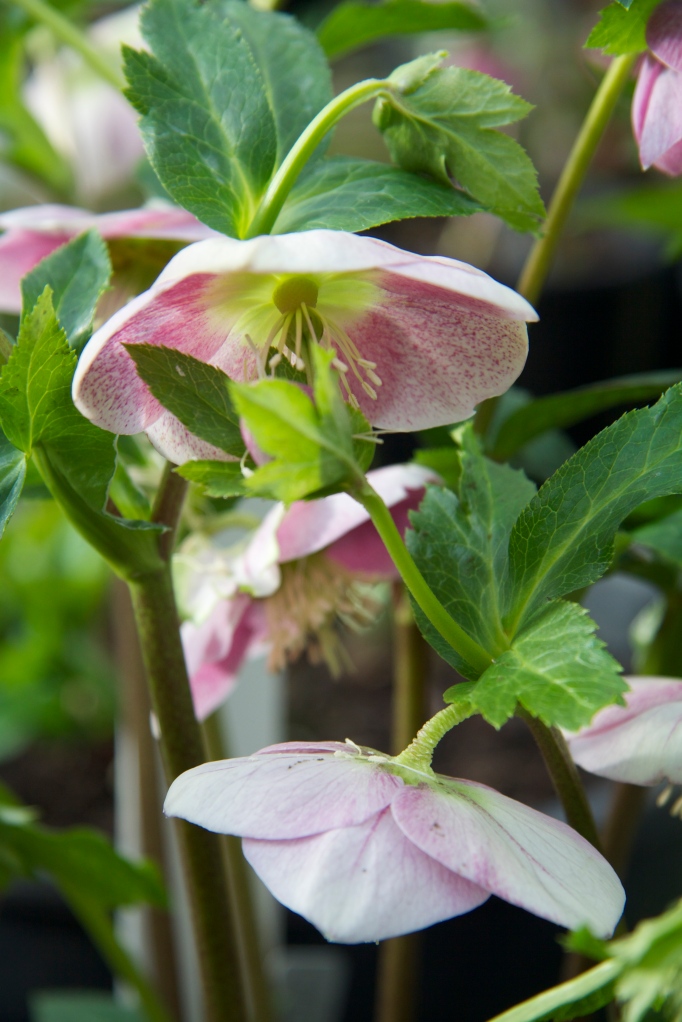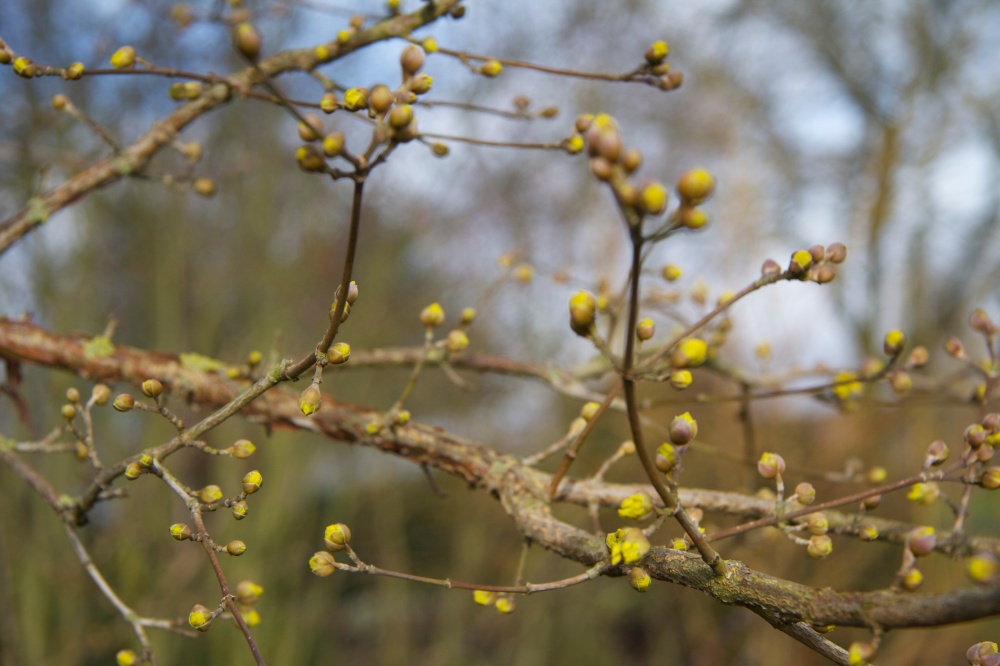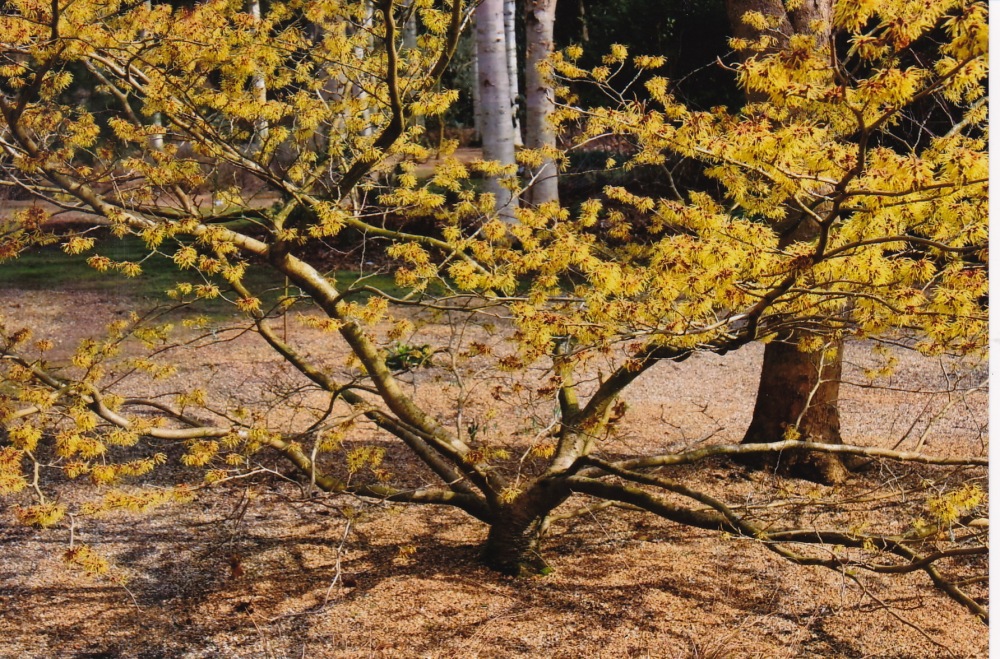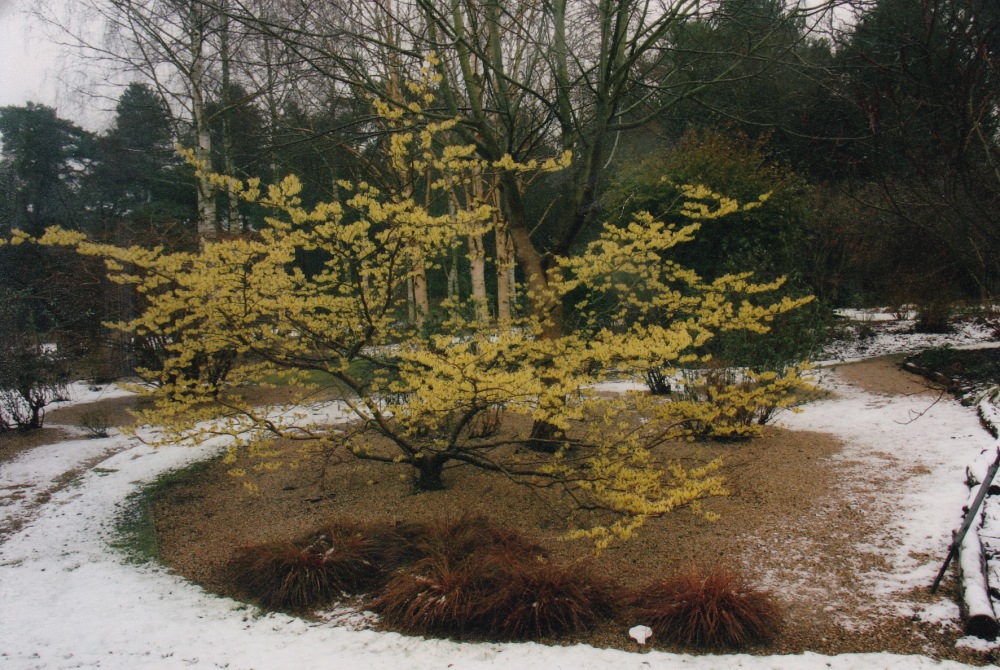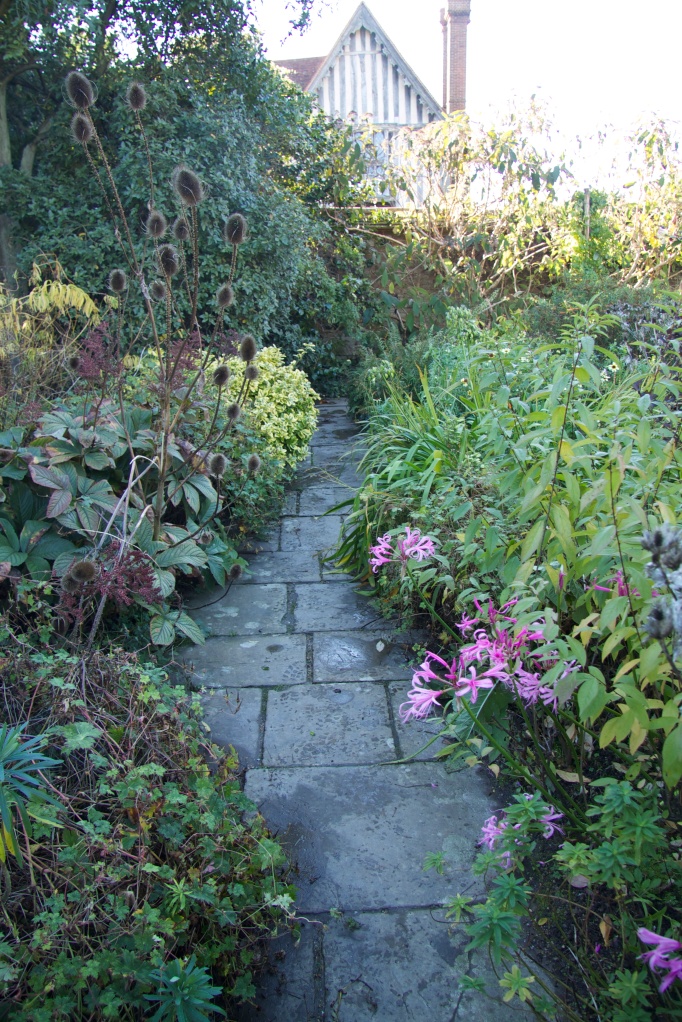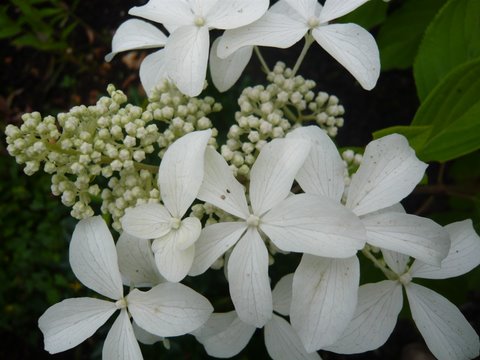A JANUARY VISIT TO ASHWOOD NURSERIES
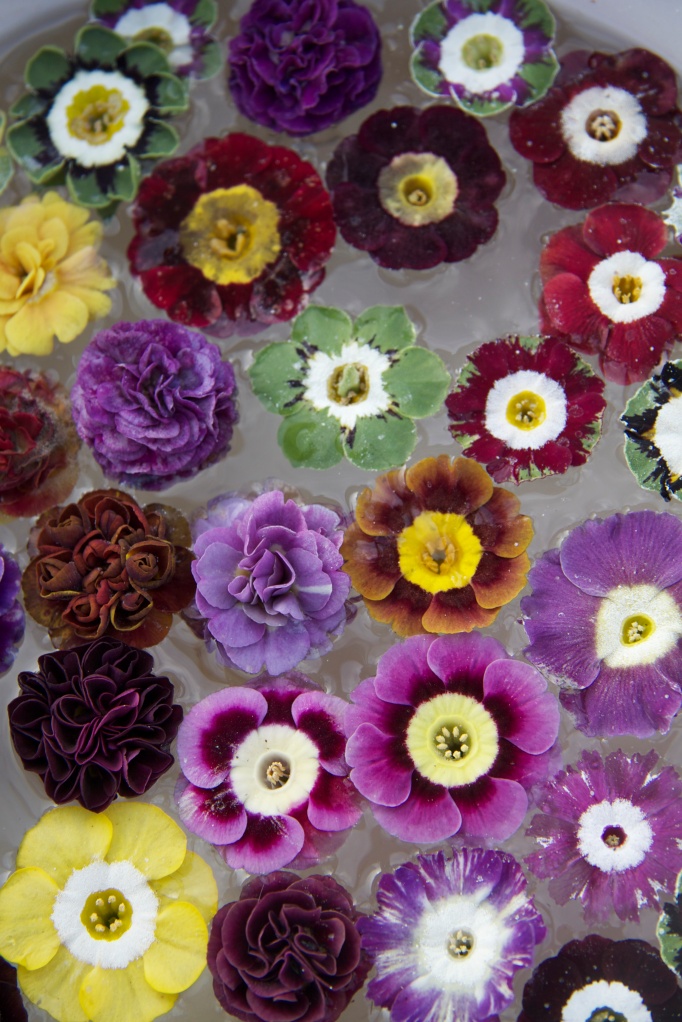 This gorgeous, spirit-lifting image is of a bowl of floating Auricula flowers at the entrance to a small ‘Alpine plant sales’ glasshouse at Ashwood Nurseries which I visited this week, (www.ashwoodnurseries.com). The nursery is completely worth a pilgrimage even if the round trip from home – London to Wolverhampton and back – is over 250 miles and even if the weather forecast during this wettest January on record is simply not be borne.
This gorgeous, spirit-lifting image is of a bowl of floating Auricula flowers at the entrance to a small ‘Alpine plant sales’ glasshouse at Ashwood Nurseries which I visited this week, (www.ashwoodnurseries.com). The nursery is completely worth a pilgrimage even if the round trip from home – London to Wolverhampton and back – is over 250 miles and even if the weather forecast during this wettest January on record is simply not be borne.
We have come – my friend and garden design partner, Helen Fraser and I – lured by the promise of a rare talk by Witch hazel authority, Chris Lane. Infuriatingly, we end up arriving late for the morning session but this is Ashwood, a nursery with an extensive and covetable plant collection much of which is for sale – so we are swiftly distracted. Within moments I am beginning a small love affair with a recently named species Hellebore Helleborus liguricus:
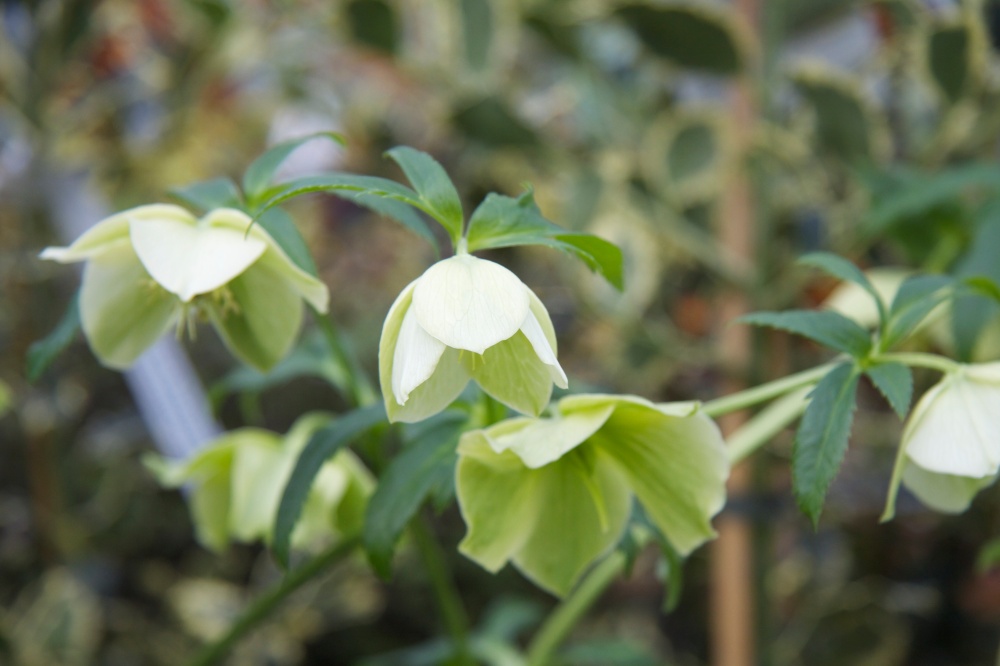 We discover that it is a tall, strong, easy garden plant, with palest green flowers held elegantly well above the foliage and the most extraordinary sweet and powerful scent. Apparently, people try to compare the scent to that of Mahonia or lemons or even cucumber. I would say it is definitely citrus-y but I like the idea of cucumber too – it begins to communicate its alluring freshness. I buy several plants for my partly shaded but very sheltered London terrace. I will use them in combination with Euphorbia mellifera and Polystichum setiferum:
We discover that it is a tall, strong, easy garden plant, with palest green flowers held elegantly well above the foliage and the most extraordinary sweet and powerful scent. Apparently, people try to compare the scent to that of Mahonia or lemons or even cucumber. I would say it is definitely citrus-y but I like the idea of cucumber too – it begins to communicate its alluring freshness. I buy several plants for my partly shaded but very sheltered London terrace. I will use them in combination with Euphorbia mellifera and Polystichum setiferum:
Nandina domestica:
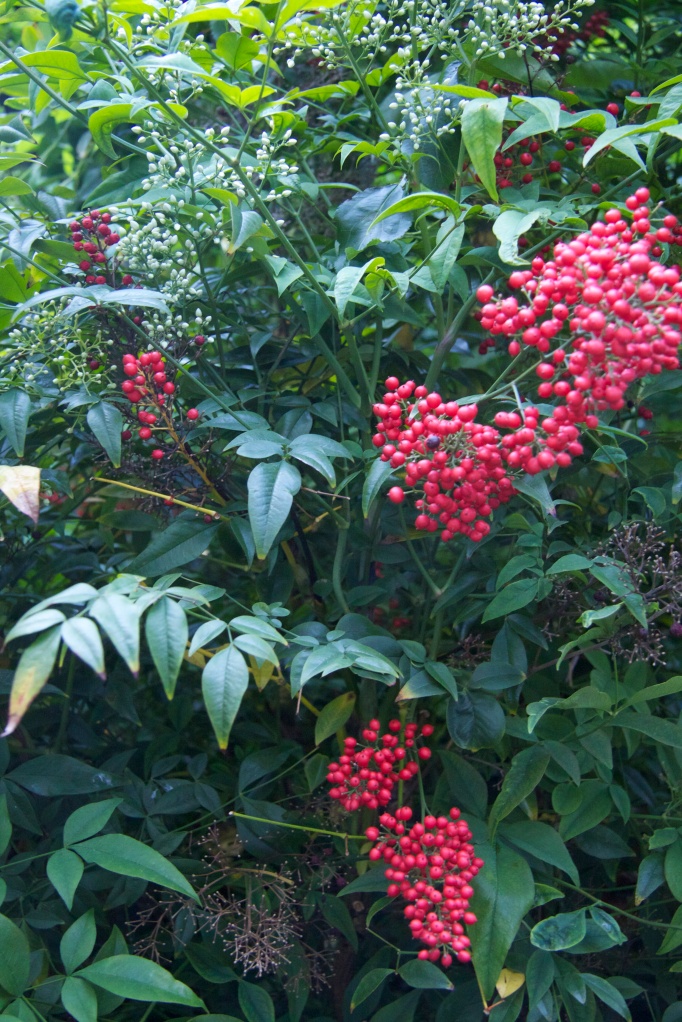 and Japanese anemone ‘Honorine Jobert’ (for later in the year!):
and Japanese anemone ‘Honorine Jobert’ (for later in the year!):
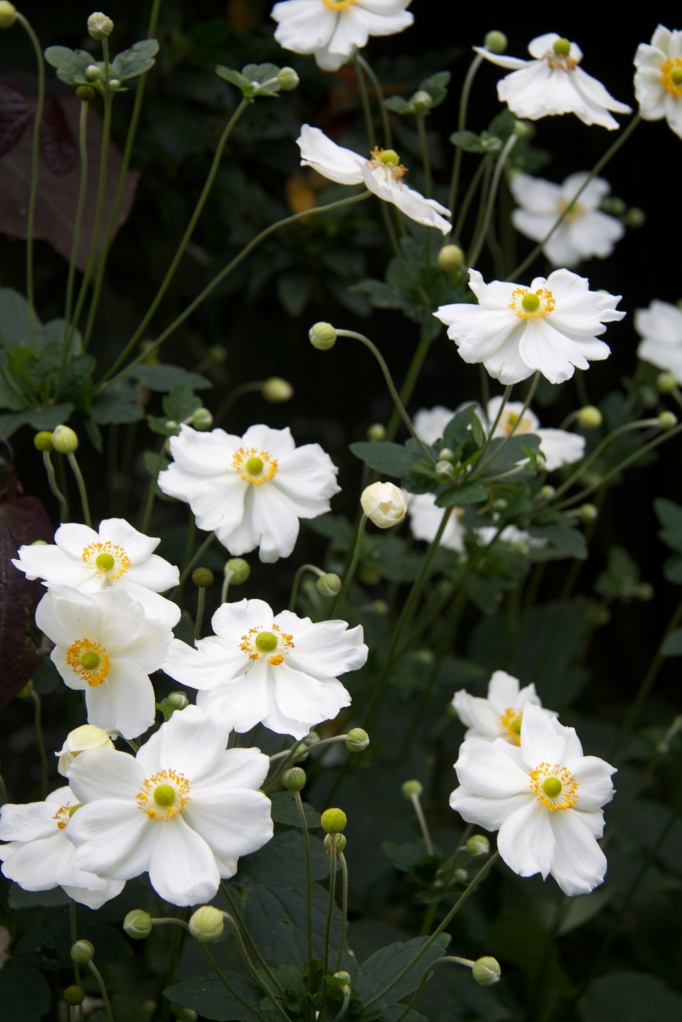 I will love to have the graceful, bobbing saucers of intoxicatingly scented pale green just outside my back door.
I will love to have the graceful, bobbing saucers of intoxicatingly scented pale green just outside my back door.
Back at Ashwood Nurseries, we stop to admire the finely etched lines of deep pink on white of this lovely Hellebore:
– a perfect example of Helleborus x hybridus ‘Ashwood Garden Hybrid’ – hellebores selected for their purity of colour, beautiful markings, quality of their flower form and shape with a reputation for retaining their intensity of colour over a long period. We start talking about hellebores to Phillip Burden, an Ashwood nurseryman – whose specialities are in fact Cyclamen, Auricula and Lewisia. Phillip has the patient, generous-spirited, knowledgeable calm which seems to characterise the approach to plants here. He invites us to the Hellebore glass house – reserved really for the renowned ‘Hellebore Tours’ where visitors can buy from an exhilerating range of unique plants (you are not too late, there is one further Hellebore day on February 15th). This is the glasshouse – we were feeling pretty excited at this point …
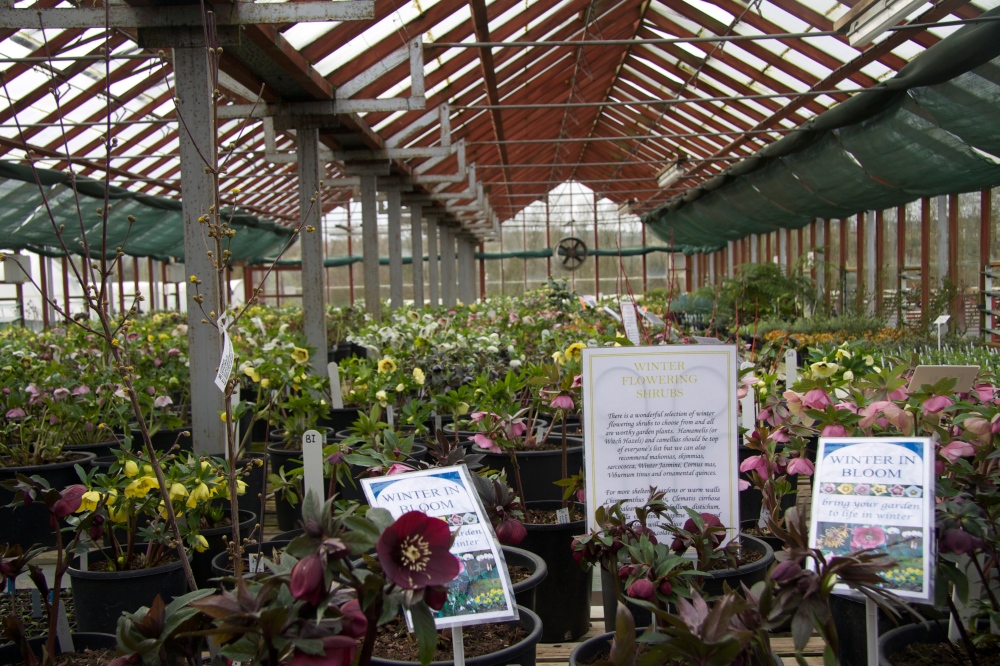 -And here are some of my favourites:
-And here are some of my favourites:
A few of the Ashwood hybrids have slightly extreme, decorative qualities which are perhaps for specialist collectors only but most of them are subtle and gorgeous, super-healthy plants which would be wonderful additions to soft and natural spring gardens.
Dizzy with hellebores, we move onto Cyclamen. Phillip shows us fantastic fat pots of Cyclamen coum.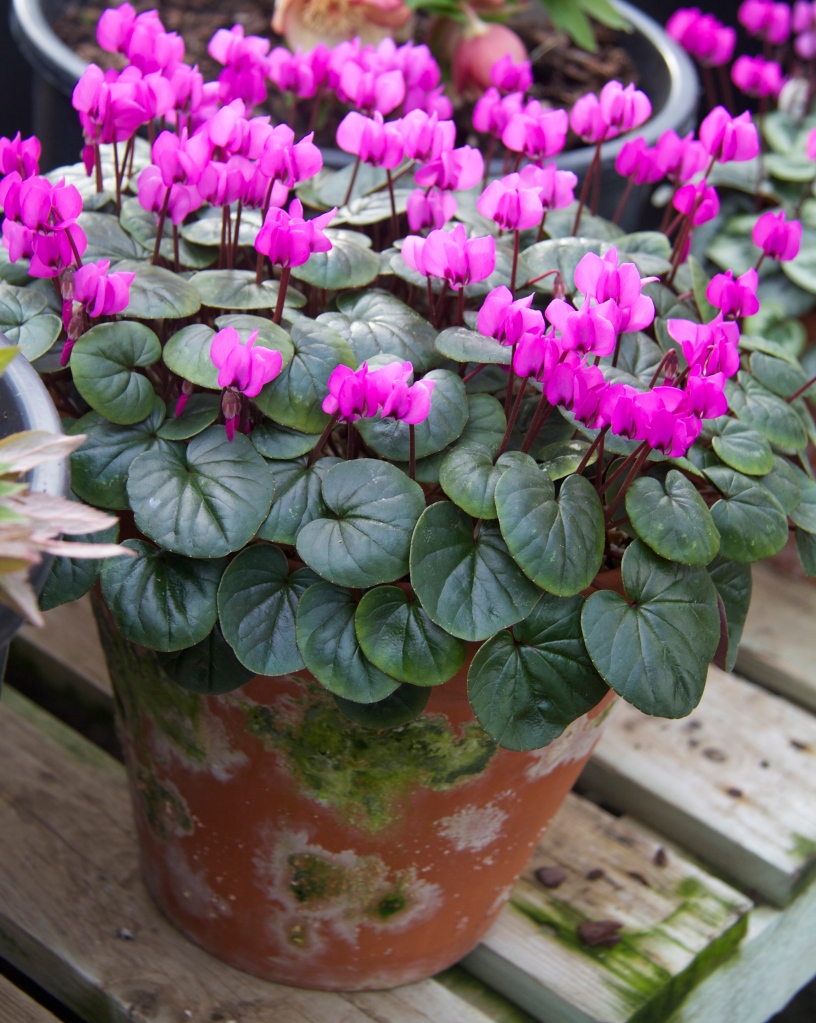
 We are struck by the tremendous success of the seemingly simple idea of taking one 9cm pot of Cyclamen coum, potting it up with plenty of drainage “perlite rather than grit”, says Phillip, and just transferring it to a slightly larger pot each year. The plants he shows us are satisfyingly dense and offer a brilliant injection of colour – they are ten years old. I buy a tiny pot and pledge to keep it going for at least a decade.
We are struck by the tremendous success of the seemingly simple idea of taking one 9cm pot of Cyclamen coum, potting it up with plenty of drainage “perlite rather than grit”, says Phillip, and just transferring it to a slightly larger pot each year. The plants he shows us are satisfyingly dense and offer a brilliant injection of colour – they are ten years old. I buy a tiny pot and pledge to keep it going for at least a decade.
We move onto more rarified treasures such as the delicate windmill-flowered Cyclamen alpinum: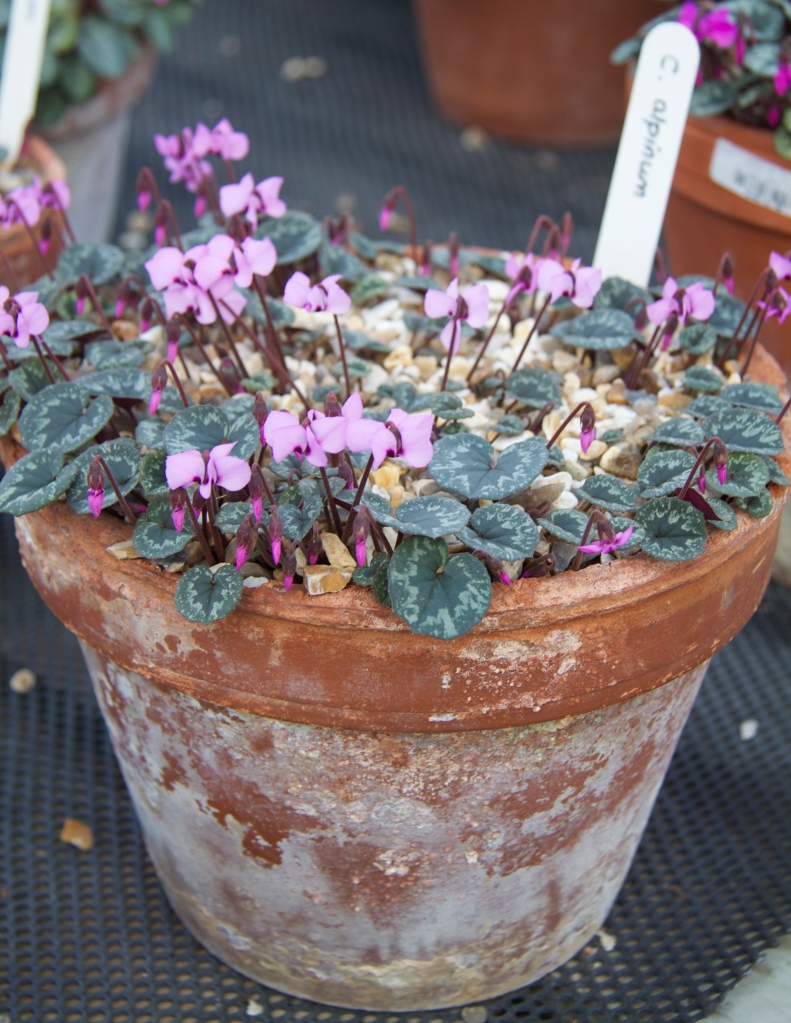 Dangerously tempting, but these are jewels for a glass house or alpine house and not for outside.
Dangerously tempting, but these are jewels for a glass house or alpine house and not for outside.
We are bowled over by the quietly dazzling subtleties of the Cyclamen creticum foliage:
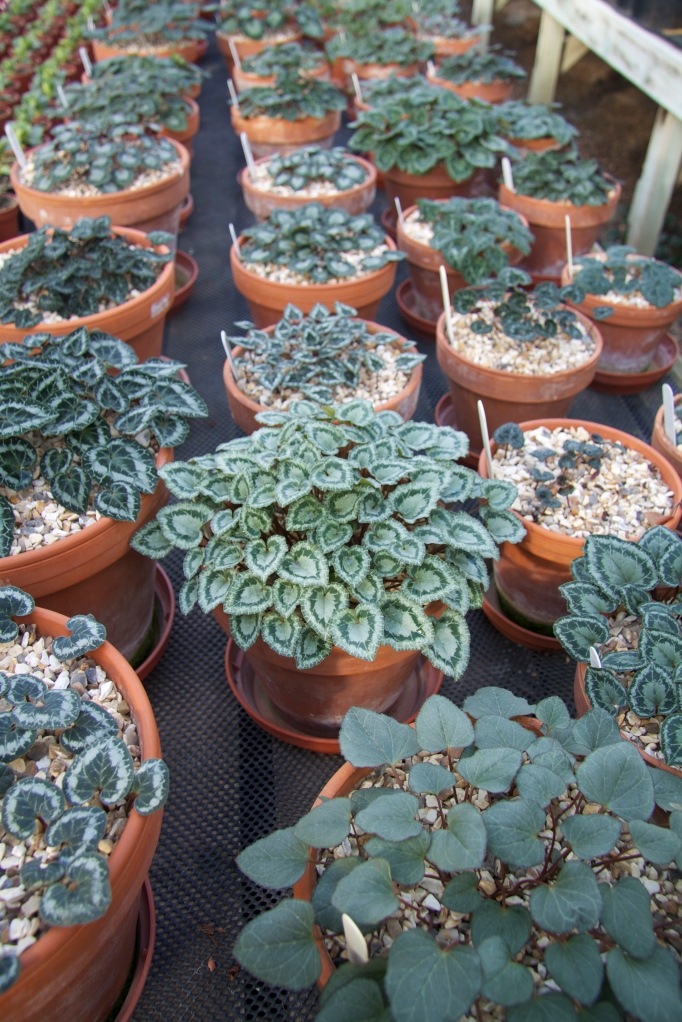 and smile at the rarest of all with its excellent label:
and smile at the rarest of all with its excellent label:
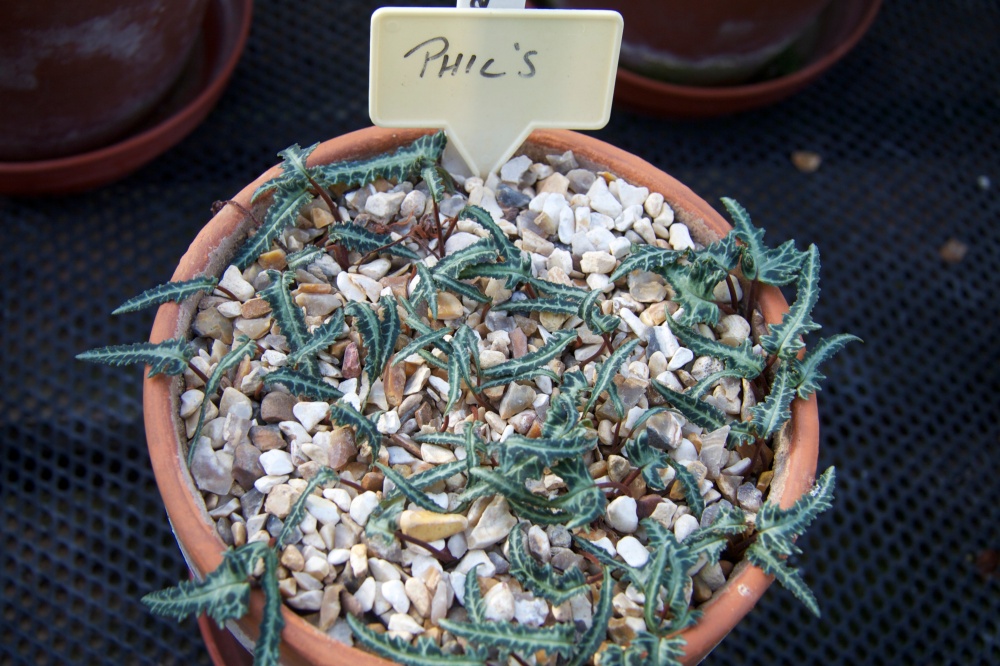 And then we are outside again and have the chance to see nursery owner, John Massey’s private garden.
And then we are outside again and have the chance to see nursery owner, John Massey’s private garden.
The Cyclamen coum is looking as vibrant outside as it does under glass – and looks great, gentler probably, with the ground covered with a mulch of fine gravel rather than just bare earth:
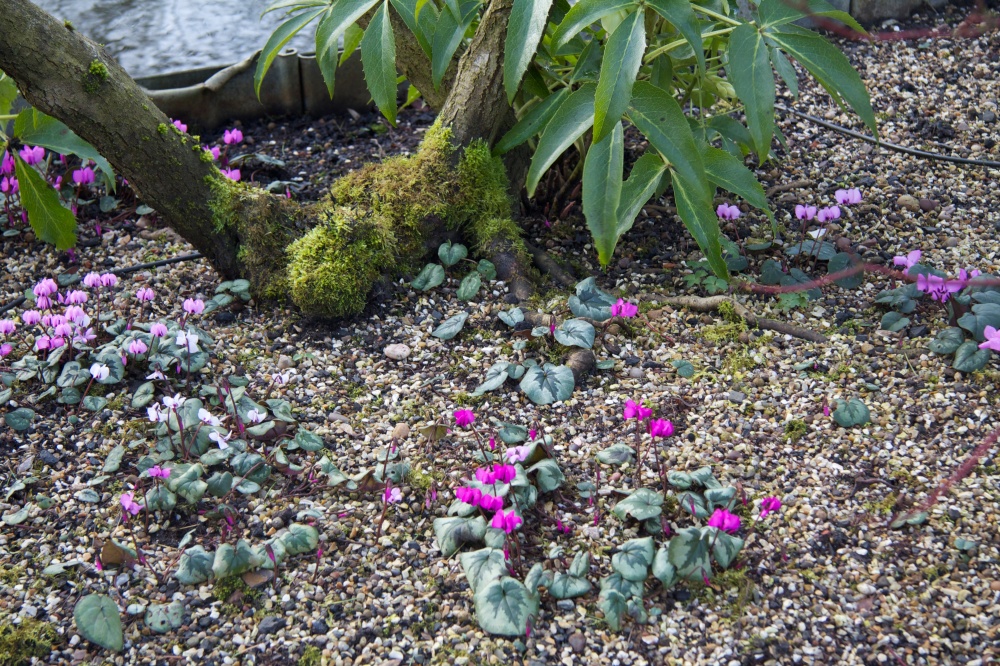 Not surprisingly, my favourite moments here on this bitter day are small ones. I love to see the tiny buds of the small spreading tree, Cornus mas just on the verge of opening – ten days more and it will be a haze of bright yellow:
Not surprisingly, my favourite moments here on this bitter day are small ones. I love to see the tiny buds of the small spreading tree, Cornus mas just on the verge of opening – ten days more and it will be a haze of bright yellow:
After admiring the fine princesses of the Hellebore world, it is a pleasure to see the distinctly muscly, Helleborus x sternii with soft pink-grey flowers take on the role of a small architecutural shrub:
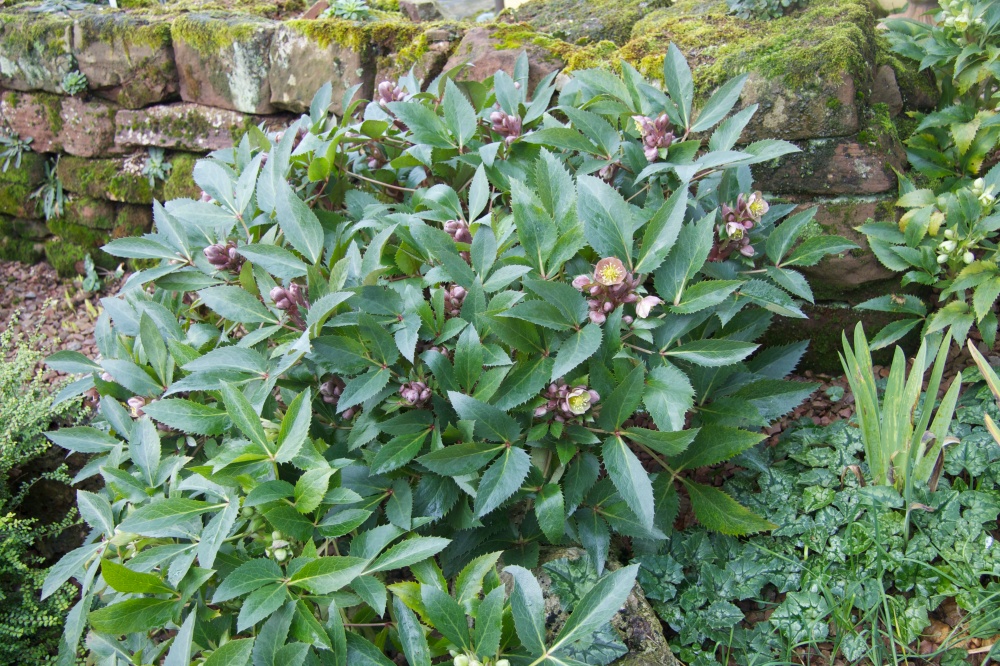
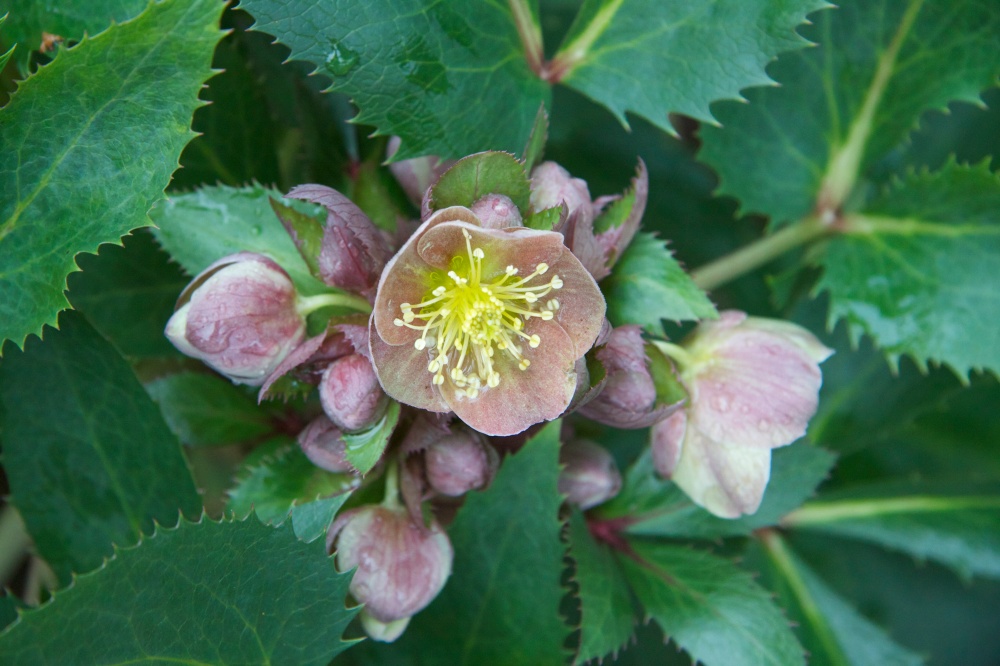 And I love the dense mat of Cyclamen hederifolium, Ajuga and the bright green Euphorbia cyparissias – fantastic persian-carpet-like ground cover under mature trees.
And I love the dense mat of Cyclamen hederifolium, Ajuga and the bright green Euphorbia cyparissias – fantastic persian-carpet-like ground cover under mature trees.
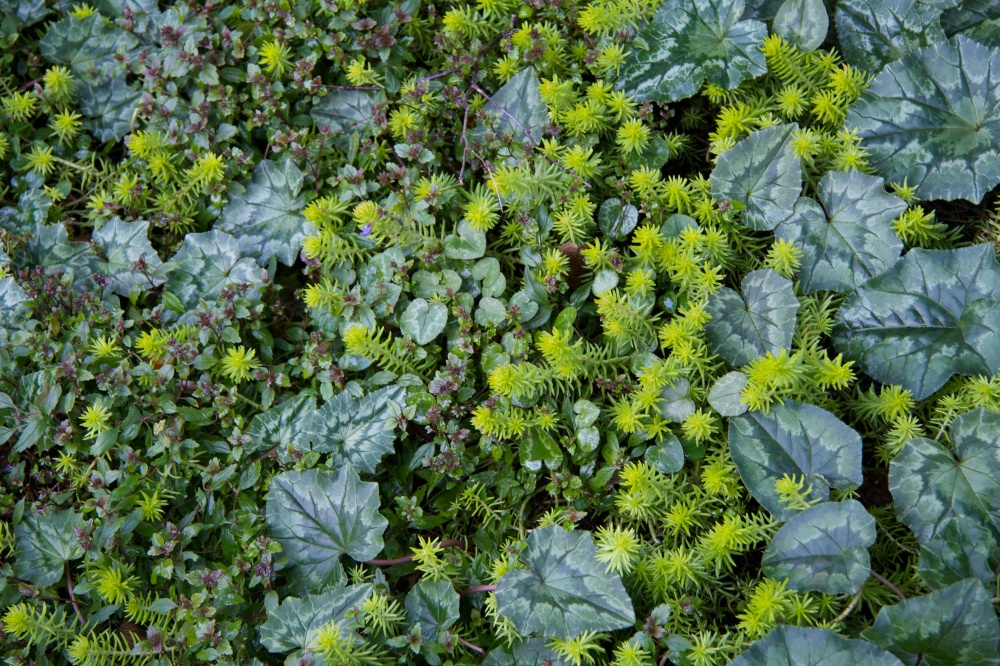 But what about the witch hazel? There are Witch hazels in John Massey’s garden:
But what about the witch hazel? There are Witch hazels in John Massey’s garden:
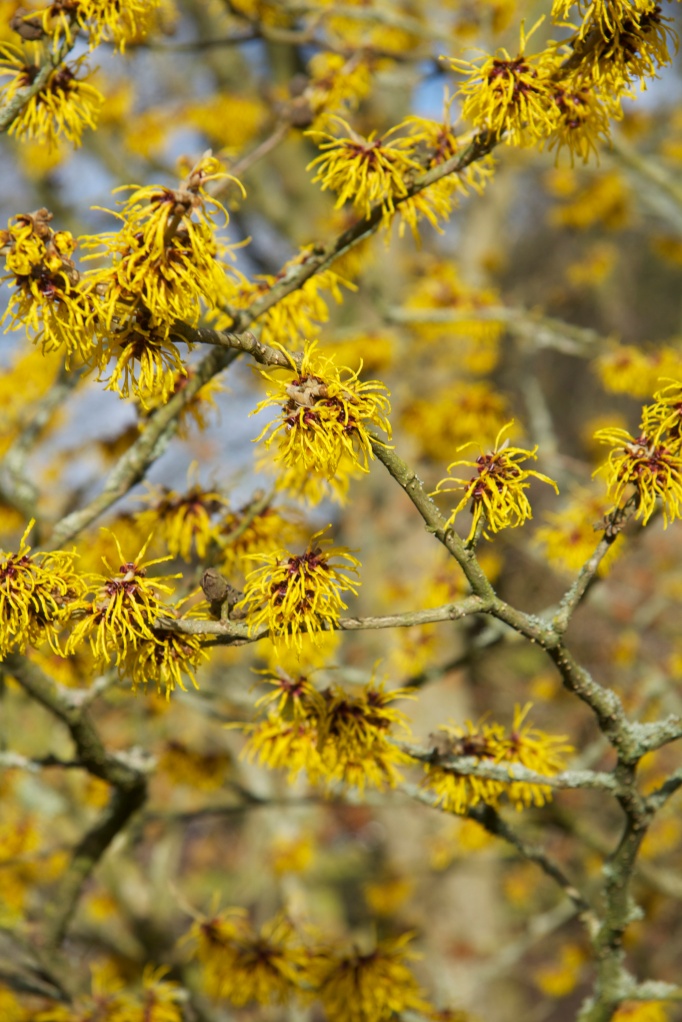 and although the day was too grim for us too find their scent they offered bursts of clear yellow and rich gold – especially effective as glimpsed in the denser planting in the private area around his house. Chris Lane – who breeds Hamamelis and has the national collection gave a wonderful and inspiring talk about Hamamelis x intermedia – a talk with human passion as the clear cornerstone to the wonderful range of Witch hazel available to us today.
and although the day was too grim for us too find their scent they offered bursts of clear yellow and rich gold – especially effective as glimpsed in the denser planting in the private area around his house. Chris Lane – who breeds Hamamelis and has the national collection gave a wonderful and inspiring talk about Hamamelis x intermedia – a talk with human passion as the clear cornerstone to the wonderful range of Witch hazel available to us today.
But the next day my plan to visit Chris’s nursery in Kent (www.witchhazelnursery.com) to photograph his incredible collection was just washed out by the non-stop rain. And so I have decided write about Witch hazel properly another time.
Eating away at me, however, is Chris’s dangerous suggestion that as well as fantastic mature specimens in the Savill and Valley Gardens near Windsor, the place to see Witch Hazels is the ‘Hamamelisfest’, (on until 23rd February), at the Kalmthout Arboretum near Antwerp in Belgium – the original home of many of the intermedia hybrid Hamamelis we grow today.
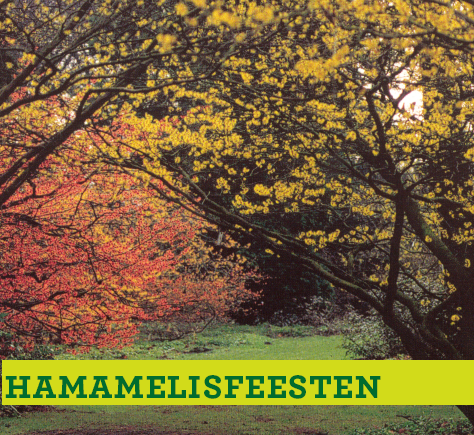 The real celebration here is seeing Witch Hazels which have become glorious spreading trees in their own right.
The real celebration here is seeing Witch Hazels which have become glorious spreading trees in their own right.
I am becoming increasingly keen on letting a good plant have the space it really needs. At Fullers Mill Garden in Suffolk (www.fullersmillgarden.org.uk) there is a single, prize witch hazel which lights up the woodland in winter – not least because it is has been given room to throw out its arms and be itself.

